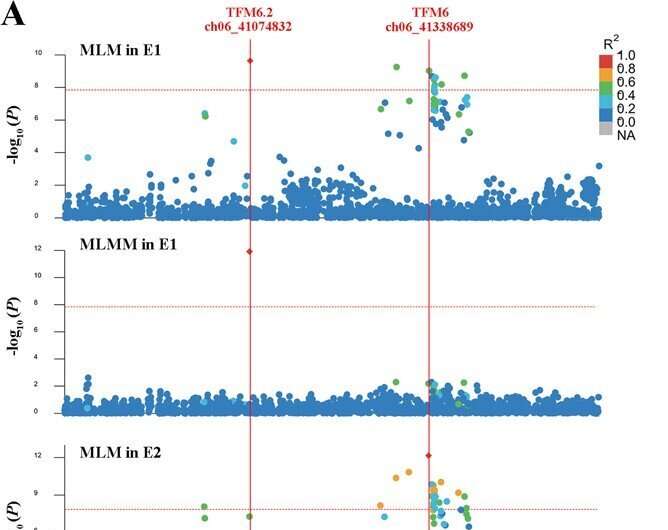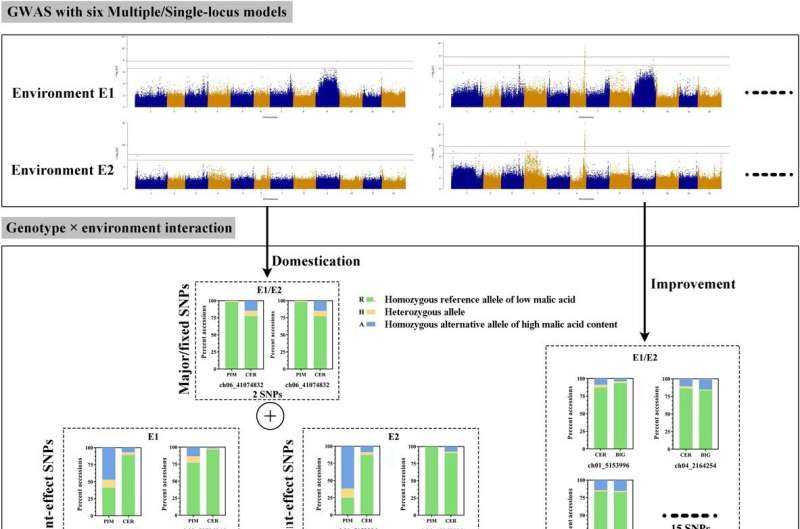This article has been reviewed according to Science X's editorial process and policies. Editors have highlighted the following attributes while ensuring the content's credibility:
fact-checked
trusted source
proofread
Multiple-model GWAS identifies optimal allelic combinations of quantitative trait loci for malic acid in tomato

A study published in the journal Horticulture Research sought to identify loci and decipher the polygenic architecture of malic acid content in tomato fruit. The authors carried out a GWAS using six milestone models with two-environment repeats. A series of associated SNP variations were identified from GWAS, and 15 high-confidence annotated genes were obtained based on the lead SNPs and the malic acid accumulation.
The optimal allelic combination of the 15 loci was presented for tastier tomato. The genetic parameters of population-differentiation were employed to identify potential selective sweep signals on malic acid during domestication and improvement.
The authors identified natural variations underlying malic acid in tomato with multiple-model GWAS. This study will provide new genetic insights into how tomato malic acid content evolved during breeding and optional QTL combinations for higher malic acid in tomato.

More information: Wenxian Gai et al, Multiple-model GWAS identifies optimal allelic combinations of quantitative trait loci for malic acid in tomato, Horticulture Research (2023). DOI: 10.1093/hr/uhad021
Provided by NanJing Agricultural University



















